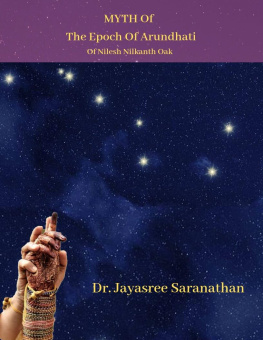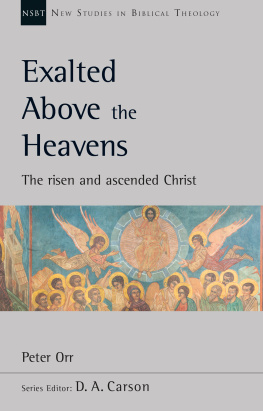Donald Wesley Patten - The Biblical Flood and the Ice Epoch
Here you can read online Donald Wesley Patten - The Biblical Flood and the Ice Epoch full text of the book (entire story) in english for free. Download pdf and epub, get meaning, cover and reviews about this ebook. genre: Children. Description of the work, (preface) as well as reviews are available. Best literature library LitArk.com created for fans of good reading and offers a wide selection of genres:
Romance novel
Science fiction
Adventure
Detective
Science
History
Home and family
Prose
Art
Politics
Computer
Non-fiction
Religion
Business
Children
Humor
Choose a favorite category and find really read worthwhile books. Enjoy immersion in the world of imagination, feel the emotions of the characters or learn something new for yourself, make an fascinating discovery.

- Book:The Biblical Flood and the Ice Epoch
- Author:
- Genre:
- Rating:4 / 5
- Favourites:Add to favourites
- Your mark:
- 80
- 1
- 2
- 3
- 4
- 5
The Biblical Flood and the Ice Epoch: summary, description and annotation
We offer to read an annotation, description, summary or preface (depends on what the author of the book "The Biblical Flood and the Ice Epoch" wrote himself). If you haven't found the necessary information about the book — write in the comments, we will try to find it.
The Biblical Flood and the Ice Epoch — read online for free the complete book (whole text) full work
Below is the text of the book, divided by pages. System saving the place of the last page read, allows you to conveniently read the book "The Biblical Flood and the Ice Epoch" online for free, without having to search again every time where you left off. Put a bookmark, and you can go to the page where you finished reading at any time.
Font size:
Interval:
Bookmark:
CHAPTER I
, pp. 319-322.
2. The term "swirling sphere," or a like term "spiraling sphere," make good alliteration in the English language. However, some object to the use of either of these terms on the basis that they inaccurately describe the Earth's motion around the Sun in our solar system. In this limited sense, such a point may be valid. However in a broader sense, the terms "swirling sphere" or "spiraling sphere" are precisely correct.
The Earth possesses four types of motion. One is centrifugal, due to the Earth's rotation around its axis. This is at an equatorial or circumferential speed of approximately .29 miles per second. A second motion is revolving motion, due to the Earth's revolving around the Sun. This is at an orbital velocity of about 18 1/2 miles per second.
However the Earth possesses two additional motions. Third is galactic motion. Our Sun and all of the members of its solar family are revolving around our galaxy, the Milky Way, at a rate of 12 miles per second in the direction of the constellation Hercules. Fourthly, our galaxy is revolving through the universe, at an additional velocity of 170 miles per second in the direction of the constellation Cyngus. Thus the term "swirling sphere" is a good term from the galactic perspective; the term "spiraling sphere" is perhaps superior. These terms accurately describe the Earth's motion as viewed from the Milky Way.
CHAPTER II
1. Webster's Collegiate Dictionary, Springfield, Mass.: G. & C. Merriam Co., 1946, "Catastrophism," p. 169; "Uniformitarianism," p. 1093.
2. Dolph E. Hooker, Those Astounding Ice Ages, New York: Exposition Press, 1958, p. 137.
"Men of narrow, cynical minds may say the biblical story of a Flood is nothing but a fanciful Sumerian tale. How do they know? Aside from pure assumption, based solely upon imagination, they can produce no evidence whatsoever to support such a statement. On the other hand, evidence to sustain validity of the biblical story is plainly visible not only throughout the whole world, but in the heavens as well. Furthermore, the story is by no means exclusively Sumerian. It exists in the traditions of nations throughout the world nations some of whom never heard of the Sumerians. One need not accept the biblical story as God-given to recognize that its truth is attested by much actual evidence."
3. Byron C. Nelson, The Deluge Story in Stone, Minneapolis: Augsburg Publishing House, 1931, p. 7.
4. Further discussion of Hutton's approach is given in Chapter III, p. 34, footnote 2, and Chapter V, p. 72, footnote 9.
5. Further discussion of the Lyellian time chart is given in Chapter XI, p. 301. A catastrophic time chart is also given on p. 302.
6. Immanuel Velikovsky, Earth in Upheaval, New York: Doubleday & Co., 1955, pp. 161-162.
7. In 1880, Darwin received a letter from Marx asking his permission to dedicate the English edition of Das Kapital to him. With courtesy, Darwin refused, not because he did not share Marx's atheism, but rather because his family and friends would not approve of so atheistic a work. (Gavin De Beer, Charles Darwin, Thomas Nelson & Sons Ltd., London, 1963, p. 266.)
The fact that Darwin was a capitalist must reflect Marx's intense interest and overriding enthusiasm for Darwin's biology, because Darwin in no way shared Marx's view of economics or politics. In fact both Darwin and his wife, Emma (Wedgwood) Darwin, happened to be grandchildren of Josiah Wedgwood, a famous entrepreneur, the Henry Ford of the pottery industry in 18th century England, who led a typical Horatio Alger success story of rags to great riches.
8. Author's Note: The tendency toward conformity is strong among the scholarly community, even though they are the first and the loudest to disdain the principle. Spengler, for instance, noticed this one generation ago in Germany, and used a descriptive term translated as "the intellectual mob." Academic men will recognize the tendency of their own community to adopt ideas en masse, while decrying the same principle in the total society. In the academic world, perhaps more than in society in general, promotions for instance, are highly dependent on conformity.
9. Alfred M. Rehwinkel, The Flood, St. Louis: Concordia Publishing House, 1951, pp. 127-176. Further discussion of this subject is also given in Chapter VIII of this volume.
10. Charles Hapgood, "The Mystery of the Frozen Mammoths," Coronet, Sept. 1960.
11. Ivan T. Sanderson, "Riddle of the Frozen Giants," Saturday Evening Post, Jan. 16. 1960.
12. Immanuel Velikovsky, Worlds in Collision, New York: Doubleday & Co., 1950. Immanuel Velikovsky, Earth in Upheaval, New York: Doubleday & Co., 1955.
13. One of Velikovsky's errors of predisposition is discussed in Chapter X, page 266.
14. Dolph Earl Hooker, Those Astounding Ice Ages, New York: Exposition Press, 1958.
CHAPTER III
1. These two works of William Whiston are both available in magnified microfilm reprints, reprinted xerographically, by the Pacific Meridian Publishing Co. of Seattle. A third work by Isaac Newton, published posthumously by his sister, is also available through microfilm reprints. It is entitled Observations upon The Prophecies of Daniel and the Apocalypse of St. John (1733). Newton was very much a Calvinist and a Puritan. Being a scientist, he had entered into an agreement with the Royal Society to do no publishing on subjects religious during his lifetime. The Royal Society thereby hoped that theologians would not concern themselves with publishing on matters scientific. Nevertheless when Newton died, some 80% of his unpublished writings did not concern astronomy, mathematics or physics. They concerned his deep Christian faith. A very few of these have been published; many unpublished items are located at the Babson Institute.
2. James Hutton was an M.D. who, being independently wealthy, devoted vast amounts of time to the study of this new field of geology. His interest in geology was in the nature of being possessed by a hobby; others with whom he associated were academic figures and were truly professionals in that early day of geological study. Hutton became the prime figure in the early Scottish school of geology, and he confined his studies to Scotland, and particularly the Scottish Highlands. He advocated the concept of "oceans of time" for all geological events, and fortified his ideas with appeals to the rocks exclusively. This is to say he looked downward only; he did not look upward and give any consideration to astronomical data as having a possible bearing on his methodology; neither did he look backward into history and give any consideration to ancient cosmologies as having any possible bearing upon his methodology.
Hutton's error was not in his appeal to the rocks for the history of the Earth, but rather his appeal exclusively to only the rocks, and exclusively to forces which his generation had experienced and recorded. Hutton's idea of catastrophism was limited to (a) a mild earthquake, and (b) the eruption of a volcano. Hall, Lyell and Playfair followed Hutton's lead in this respect. "Nor are we to proceed in feigning causes when those appear insufficient which occur in our experience," said Hutton (Hutton's Theory of the Earth, I. p. 160, ii p. 549).
3. Lyell's geological time chart is given in Chapter XI, p. 301. It is the policy within this book not merely to demonstrate why certain ideas or hypotheses are incongruous. This is merely replacing a poor idea with no idea. Rather the policy of this book has been to offer an alternative and better idea to what is considered a poor idea. This principle is achieved in several chapters of this work. One reflection of this principle is the proposing of a catastrophic geological time chart in Chapter XI, p. 302, immediately following the Lyellian time chart.
Font size:
Interval:
Bookmark:
Similar books «The Biblical Flood and the Ice Epoch»
Look at similar books to The Biblical Flood and the Ice Epoch. We have selected literature similar in name and meaning in the hope of providing readers with more options to find new, interesting, not yet read works.
Discussion, reviews of the book The Biblical Flood and the Ice Epoch and just readers' own opinions. Leave your comments, write what you think about the work, its meaning or the main characters. Specify what exactly you liked and what you didn't like, and why you think so.







